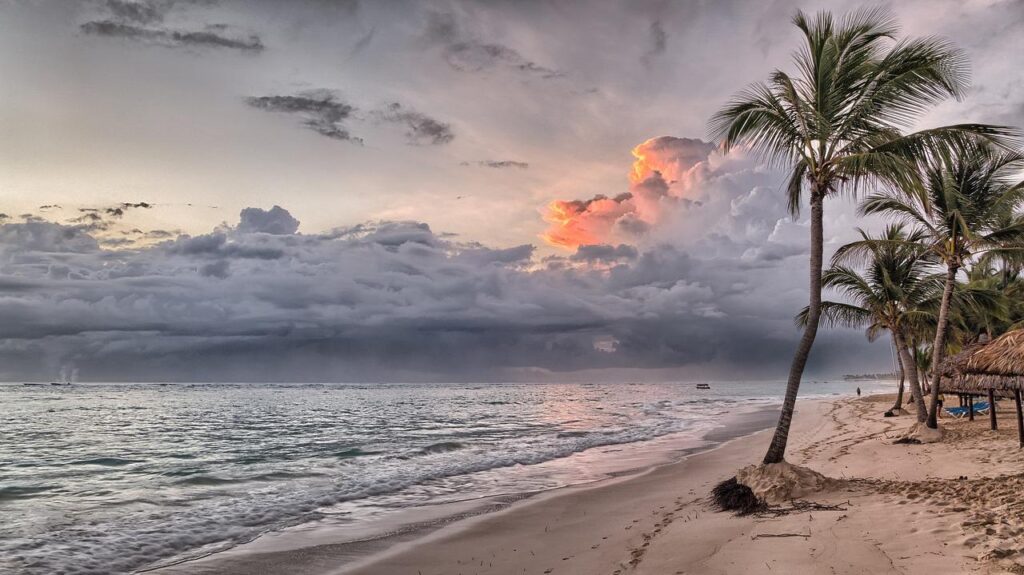
We continue to study also Edo religion, necessary to fight trafficking in Nigeria
Edo State is located in the South Western region of Nigeria. It is populated by the Bini, the Afemai , the Ishan, Etsako, Sabongida-Ora, Irrua and Esan.
Its neigbours in the West are the Yoruba of Ondo State, to the North, the Akoko Edo, the Sobe and in the South, the Urhobo people of Delta State.
_____
IF YOU THINK TO GO EUROPE READ HERE
IF YOU ARE IN ITALY AND NEED HELP BECAUSE OF TRAFFICKING CALL US (also write on whatsapp) 3404817498
_____
Occupation
The Edo people are predominantly farmers, while a few are fishermen and hunters.
Origin
The Bini people refer to their land as “the centre of creation” which in Bini dialect is Ore ise Agbon meaning the land that extends to the invisible world.
Myths
The Bini have a myth which says that the world was water and only a tree known as the “Ikhimwin tree” stands on that water. On that tree lives a bird known as the “Owonwon” (a double casque hornbill bird). This long-beaked bird features in a lot of African masks. It is referred to as the bird of creation. The myth went further to say that when Osanobua who is God Almighty wanted to create the world, he sent his three children as intermediaries. They are Obiemven, Olokun and Oguiwu the youngest. As they left for the earth, Owonwon seriosuly instructed them to take along a snail shell. They peddled and got to a spot where Obiemven, the eldest daughter, turned the shell upside and out came an endless stream of sand which turned the water into land. The chameleon tested the firmness of the land and so they settled there.
Osanobua later shared the earth among them. To Obiemven, he gave the control of childbirth and agricultural fertility. To Olokun, he gave the control of riches and wealth and Ogiuwu became the dispenser of death.
Another version by Paula Ben Amos states that Osanobua had three sons who were Olokun, Ogiuwu and the last who became the kind of Benin and owner of the land that even extends to Europe.
Yet another version says that Osanobua created kings to rule over the earth and that before they descended, he gave them each a gift for the use of humans ranging from wealth, magic and crafts but that the Oba of Benin chose a snail shell full of sand. He poured the sand at a point and immediately there was dry land. However, the kings that chose wealth and magic had to beg the Oba of Benin because even though they had their gifts there was no land for them to settle.
Although these are all myths, they all gave the Oba an air of importance.
There was a very high regard for the kingship. His word is law. In Benin the only person higher than the king is Osanobua.
Olokun
Now of all the three children, Olokun is the most revered. She has been worshipped for centuries. She is still referred to as the mother of all human beings and living things – the Earth goddess.
Ogiuwu, the dispenser of death, suffered a similar fate. Before1897, an Ogiuwu, Shrine stood next to the shrine of war in the old palace grounds.
Human sacrifices were made there to protect soldiers that are marching into battle and another one on their successful return. However, no image of Ogiuwu existed because no artist dared draw the face of death instead Ofoe (death’s messenger) is depicted. Ofoe’s head sprouts limbs which relentlessly pursue its victims to death. Ofoe is said to be very ruthless and merciless.
He is also called A-guan-a-i-hon which in English means – “we plead, he does not listen.”
The Worship Of Olokun
The worship of Olokun deity in Benin may be because every Bini person believes that the land of the living is surrounded by limitless water into which all rivers flow and that human souls must cross these waters “Olokun realms” either to be born or depart on their way to the spirit world after death.
They also believe that a man is partly responsible for his fate. Before a man is born, he stands before Osanobua and tells him what he intends to do on earth and how long he intends to stay. When he has developed his plan before Osanobua, he may receive blessings either from Olokun or Esu (satan).
If Olokun blesses him, he will be lucky, rich and successful. If on the other hand, Esu blesses him, he will be wicked and probably become a criminal. This is the belief of the majority of the Bini people.
_____
IF YOU THINK TO GO EUROPE READ HERE
IF YOU ARE IN ITALY AND NEED HELP BECAUSE OF TRAFFICKING CALL US (also write on whatsapp) 3404817498
_____
Meaning Of Olokun
Olokun is a Bini word. Okun is a Bini word for ocean while Olo is a Bini word for owner so Olokun simply means the owner of the ocean. Today, Olokun is a focus of intense worship in every household in Benin, there is a shrine of the Olokun for every woman and perhaps another shrine for the household head.
Shrine Objects & Symbolism
Shrine objects found in a typical Olokun shrine depend on the wealth of each individual. However, there are some things that are always found in each shrine. They are the clay waterpots (Uru), miniature canoes with paddles, miniature brass ladders, Orhue (river side white chalk or kaolin), cowrie shells, mirror etc. If one is wealthy, a shrine can be enlarged to fill a chamber with arrays of mud figures of Olokun and his many wives. Cowrie shells are said to be used to evoke Olokun. The monetary use of cowries with their deep symbolism of prosperity lasted well into the 20th century.
Canoes with paddles means the worshipper’s desire for social mobility. Orhue (river side white chalk or kaolin) symbolises purity and happiness. In Benin someone who receives goodnews is said to have “a stomach full of chalk”.
Miniature brass ladders are a symbol of spiritual ascension and aspiration in Olokun worship. Mirrors which represent water is used for trance procession and a vehicle to the spirit world. There is also the Aza bell used by the priestess to summon the spirits.
Sacrifice
In the shrine in Usenigbe, one can still find mud figures of messengers and other humans sacrificed at Olokun’s altar. Today, this stands as a reminder of some of the gruesome acts committed by the people in the name of religion. Nowadays human sacrifice is no longer practised. Today’s sacrifices consist of animals i.e. white cock to Osanobua, white hen to Olokun through Obiemven. Olokun also accepts white goat without blemish, coconuts, broken pieces of white China plates.
Burial
The burial rites of an influential member is a grand affair and one very notable object found in such funeral is the “Okun box”. It is a large box decorated with mirrors and white cloth used symbolically in passage rites and said to contain the deceased wealth and status. These merely represent the Olokun.
Initiation
Every four days (traditional edo week), the shrine’s members gather to evoke Olokun. They come with their requests to receive Olokun’s blessings. They believe that Olokun has power to control human fertility, give children to barren women and give them prosperity as well as elevate them socially.
Olokun’s shrine is mostly filled with women and children. Olokun devotees usually dance to the continuous beating of “Ukuse” known in Yoruba as “shekere” which is a calabash covered with stringed beads. While dancing some devotees may be transported, via the mirror, into the spirit world, where they fall into trance and if given a message by the Olokun delivers the message to other devotees.
There is also a yearly state festival, which surprisingly, does not hold in Benin but in a town called Usonigbe 60 miles away from Benin. This is said to be Olokun’s original shrine. It is a very large space that can contain many worshippers. The space contains 50 life size mud figures.
All of them are heavy and plump depicting prosperity of Olokun.
Age: The initiation into Olokun has no age limit as children as young as four years can be initiated. Initiation is done from mother to daughter.
_____
IF YOU THINK TO GO EUROPE READ HERE
IF YOU ARE IN ITALY AND NEED HELP BECAUSE OF TRAFFICKING CALL US (also write on whatsapp) 3404817498
_____
Similarities Of Olokun And Mamiwata
Most people confuse the Olokun with the Mami Wata. They are two different deities but with almost the same functions. Mami Wata is mostly worshipped in riverine areas like the Niger Delta. Both Olokun and Mami Wata use mirrors which represent water and is used as a vehicle into the other world.
White Kaolin is used for the Olokun while Talcum powder is used for the Mami Wata. Mami Wata is a very recent development so most of the things used are modern. The Olokun devotees dance to the continuous beating of “Ukuse” (calabash covered with stinged beads) while the Mami Wata devotees dance to the percusive music of the Mami Wata priestess as she plays the locally made harmonica and guitar.
The Olokun has numerous priase names but there is one that is used for her and at the same time used for Mami Wata – the name is “Oba ne Ame” (god of the sea). There is a statue said to depict the goddess in a fountain near the Oba’s palace. It is a statue of a woman wearing a coral beaded crown and other kingship apparel. Some say it is the statue of MamiWata yet others say it is a statue of the Olokun.
CYNTHIA ADMABUA IRUOBE
. Miss Iruobe is on the staff of National Commission for Museums and Monuments, Onikan, Lagos
_____
IF YOU THINK TO GO EUROPE READ HERE
IF YOU ARE IN ITALY AND NEED HELP BECAUSE OF TRAFFICKING CALL US (also write on whatsapp) 3404817498
_____

